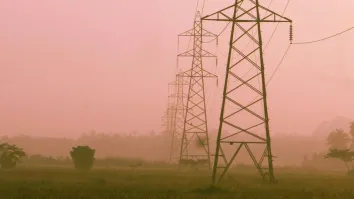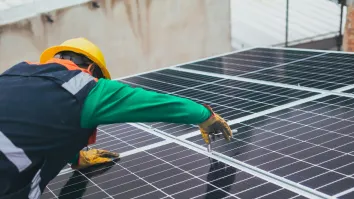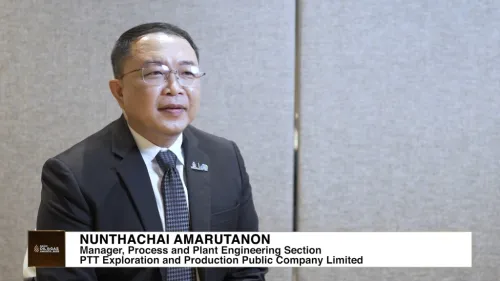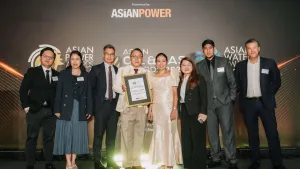What almost everyone didn't know about Malaysian waters' wealth
By Nazery KhalidBy virtue of its extended Exclusive Economic Zone, Malaysia has a maritime area, which is four times larger than its land mass.
Being surrounded by seas, Malaysia is naturally blessed in many ways. It is sits in a strategic location in one of the world’s most dynamic economic regions and along some of the world’s busiest shipping routes. Its maritime zones are also abundant with living and non-living maritime resources that are used by its population and contribute to its economy.
Malaysia is located in a marine area known to be the world’s most biologically diverse and ecologically richest. South China Sea, which makes up one of Malaysia’s four maritime zones, is known to have various types of non-living resources from which energy can be harnessed.
It is located near the area known as the ‘Ring of Fire’ that stretches 40,000 km along the Pacific Ocean that hosts active volcanic activities, where hydrothermal vents or ‘volcanic hot springs’ that create mineral-rich rock formations are found.
However, to date, no serious studies have been undertaken by on the potential of developing non-living resources in Malaysian waters.
It is lamentable that as maritime nation, Malaysia has not looked at its seas for resources beyond the obvious ones such as fish and its key export commodities, offshore oil and gas. This is despite growing domestic and global demand for natural resources and energy and the concerns over the exhaustion of onshore resources.
Nations bordering the seas – including developed ones such as the United States, Japan, Korea and France, and developing ones like China and India - are increasingly looking seaward to explore resources as alternatives to land-based ones.
They have invested heavily to undertake research and to tap into the enormous wealth of resources that the seas offer, in their internal waters and in the high seas, to meet the demands of their population and to diversify their economies.
As a nation that has in its backyard a sea which is rich in natural resources, Malaysia ought to capitalize on its location and offshore riches to seek alternative to its natural resources needs and renewable sources of energy.
Treasures from the deep
Key among non-living resources that the seas offer in abundance are minerals embedded in the seabed which have commercial use and potential, for example in the agriculture, construction and manufacturing sectors.
As technologies advance, more types of minerals beyond hydrocarbon are being mined from offshore sites and seabed areas. These include polymetallic sulphides (which contain high concentrations of copper, gold, silver and zinc),barium, manganese nodules and gas hydrate.
Their commercial attraction lies not only in the seemingly insatiable demand for precious metals but also their accessibility.
Massive sulphide formations(with length and width of up to 200m) may contain several million tons of ore and are found on the surface of the seabed, merely 1-2km below sea level. The technology and solutions available in the offshore oil and gas industry can easily be applied in seabed mining,
According to the Global Ocean Commission, commercial seabed mining was meant to begin in the 1970s withmanganese nodules – or lumps rich in metals – found on the ocean floor. To facilitate this activity, a legal framework and mechanism were established under the United Nations Law of the Sea (UNCLOS) to regulate the activity and to ensure that benefits of seabed mining were shared between nations.
However, it did not take off as it was not commercially viable to produce the nodules atthe time. This changed in the 1980s when enterprises, mainly state-owned, undertook serious exploration and began producing nodules from seabed, initially in coastal waters and subsequently in the high seas as their production became more economically attractive.
Many of the minerals mentioned earlier are usually found on the continental shelf and EEZ, plus the extended continental seabed area. This gives the coastal states of these areas control over the exploration and production of these minerals.
Seabed mining beyond their territorial waters is regulated by the International Seabed Authority (ISA) which was established under UNCLOS. ISA has thus far issued only eight licenses for exploration (none for production yet) and only for nodules, not massive-sulphide deposits.
Not surprisingly, all of these licenses were issued only to governmental or quasi-governmental agencies as private mining companies are still sizing up the commercial potential of seabed mining, especially in international waters.
These days, companies have expanded their interests on offshore non-living resources beyond nodules. The discovery by oceanographers of mineral-rich deposits on the network of submerged mountain ranges that run along the seabed between continents has triggered a new wave of excitement in seabed mining.
Mining companies such as are exploiting much larger deposits formed near hydrothermal vents, where hot, mineral-rich water sprouts through the seabed.
These deposits are rich in metals such as copper, zinc and lead, and contain rare earth elements (REE) that are used in the aerospace, telecommunications and oil industries, among many others, for example in manufacturing cutting-edge products such as high-density hard-drives, solar panels, mobile phones and wind turbine generators.
The riches of the seas have made many countries sit up and take note of the attraction of seabed mining. In March 2013, UK Prime Minister David Cameroon said that the industry could be worth GBP40 mil. to UK’s economy, and appointed Lockheed Martin to spearhead the drive to mine copper, nickel and rare earth minerals in the Pacific Ocean.
UK has joined Russia and China in the exclusive club of countries granted with seabed resources exploration licenses by ISA. Off the coast of Taranaki in New Zealand, the mining of black sand seabed for iron ore looks promising with the passing of time. Cook Islands has passed a comprehensive law to ensure sustainable management of its seabed mineral resources.
Harnessing energy from the sea
Amid concerns over depletion of hydrocarbon energy and the effects of climate change, and the global trend towards alternative clean and renewable energy, Malaysia should start to seriously consider finding alternative energy to ensure socio-economic growth and reduce its carbon footprint.
This is in line with one of the principle objectives of its National Energy Policy which is to extend the life of domestic resources and diversify away from oil to promote other energy forms.
It is also in concert with Malaysia’s commitment made during the 15th Conference of Parties (COP 15) meeting in Copenhagen in December 2009 to voluntarily reduce up to 40% of emissions intensity of GDP by 2020 compared with 2005 levels.
In this regard, Malaysia should turn to its oceans which contain riches and features from which energy can be harnessed.
As non-living resources on land come under pressure from growing demand and unsustainable exploitation, resources from the sea are being sought as alternative.
Blessed with a large maritime area rich with non-living resources, Malaysia certainly has favourable physical characteristics for non-living resources sea mining.
While it may look distant from now, one should not bet against Malaysia not to become a significant player in the field in the way that it has emerged as a major offshore oil and gas producer. It has in its backyard the South China Sea which is rich in energy and minerals that can be harnessed for the use of its population and for export.
One marine resource which has proven to be commercially viable as an alternative, clean and renewable source of energy is ocean thermal energy conversion (OTEC). It can be harnessed by converting the temperature difference between cooler waters in the deep parts of the ocean and the warmer waters on the surface.
OTEC is a renewable source of energy and holds tremendous commercial potential with lithium, used in making batteries, and mineral water as its by-products.
OTEC essentially relies on warm surface water to heat ammonia or some other fluid that boils at low temperature. The resulting gas is used to drive turbines that produce electricity. The gas is then cooled by cold water pumped up from the ocean depths and the resulting fluid is recycled to help generate power.
The production of OTEC within Malaysian waters has tremendous potential in harnessing energy on a sustainable basis.
A marine survey in the South China Sea in 2006-2008 confirmed that the temperature at the bottom of the North-Borneo Trough (also known as the Sabah Trough) at a water depth of 2,900 m is about 3 degree Celcius, compared to surface temperatures of about 29 degree Celcius.
Studies have shown that any area with a temperature differential of over 22 degree Celcius has the potential for generating not only renewable energy but also freshwater. In this regard, Malaysian waters, which are warm all year long, are suitable for this purpose.
OTEC is not the only resource available from South China Sea that can be commercially harnessed. The sea, along with US East and West Coast, has been identified to have methane hydrate deposits. The vast South China Sea also has the potential for the generation of power sources from wind and wave.
Sea of plenty
To harness the alternative resources from the sea, there has to be an accommodating legal and institutional framework and mechanism to facilitate the activity.
For example, generating power sources from the sea would require policy support to bridge the gap between the cost of generating power and the market price of electricity.
Without such support, investors would not be enticed to partake in the activity, and the potential of generating renewable and non-renewable power sources from Malaysian seas would remain unrealized.
There is already economic evidence in favour of exploration and production of renewable energy.
A report by the International Energy Agency titled ‘Renewable Energy Technology Deployment’ points out that the technology to produce renewable energy is becoming more affordable, as the cost of traditional methods of producing energy, for example through gas- and coal-fired power plants, is increasing.
According to the report, the cost of the former would eventually be almost at par with the latter, noting the rise of the cost of gas- and coal-fired plants due to the higher cost of fuel and the capital costs of some new thermal plants.
Based on this, Malaysia should seriously embark on the path of seeking alternative renewable energy. As Malaysia’s population and economy grow, itsdemand for energy will increase, as reflected in the projection of power demand growth at an annual rate of 3%-5% until 2020.
To meet the demand, Malaysia, whichhas one of the highest rates of power consumptions per capita in South East Asia, aims to increase generation capacity by more than 6,000MW between 2015 and 2020 (from the current installed capacity of 21,817MW. Meeting this demand by maintaining the status quo will eventually take a toll on land-based resources and the environment.
A January 2013 report by Malaysian-based research house MIDF Research stated that Malaysia’s current power generation mix was 58% natural gas, 33% coal, 5% hydro and 4% others (including solar and bio-fuel). The heavy reliance on gas puts it in a rather vulnerable position amid the tight supply of natural gas.
This has prompted a notable shift power in the generation mix towards greater dependence on coal-fired power plants instead.
Evidence of this is the construction of a 1,000 MW ultra supercriticalcoal-fired power plant at Tanjung Bin in the southern tip of Peninsular Malaysia and the 1,000 MW coal-fired plant, Manjung 4 in the state of Perak of the coast of the Straits of Malacca. MIDF Research projected an increase in coal-generated power from 33% to 45% by 2020 and 50% by 2030.
The Malaysian government is committed to developing a varied power generation mix to complement oil, natural gas, coal and hydro. Added to the four was 'fifth fuel', namely renewable energy, under the country’s Fuel Diversification Policy introduced in 2001 during 8th Malaysia Plan, the five-year national development plan.
The Malaysian government is seeking to intensify the development of renewable energy, in particular biomass, by providing fiscal incentives (for example, offering investment tax allowance for those producing energy from renewable sources) and introducing the Small Renewable Energy Programme to promote connecting small renewable power generation plants to the national grid.
In this regard, it makes full sense to look seaward for resources which Malaysia is blessed with to seek a cleaner, renewable alternative to the current way of producing energy and obtaining minerals.
The economic potential of exploiting them is not fully realized yet but harnessing non-living resources from the sea can be just as common one day as offshore oil and gas which are the mainstay of Malaysia’s economy. With available technology and methods, and strong policy push, offshore production of energy and minerals can be a commercially feasible proposition in Malaysian waters, especially in the South China Sea.
Offshore energy and minerals can become strategically important sources to meet Malaysia’s needs one day. With the right push, the nation can capitalize on the riches of these resources which it is blessed with, and join other nations that have undertaken systematic efforts to develop natural resources from the seas.
Needless to say, Malaysia’s entrance into the field of seabed mining and energy production using OTEC must be preceded by detailed and comprehensive study of its scientific and technological feasibility, commercial prospect, strategic implication and potential risks and impact on other marine resources and the seabed’s environment.




















 Advertise
Advertise








